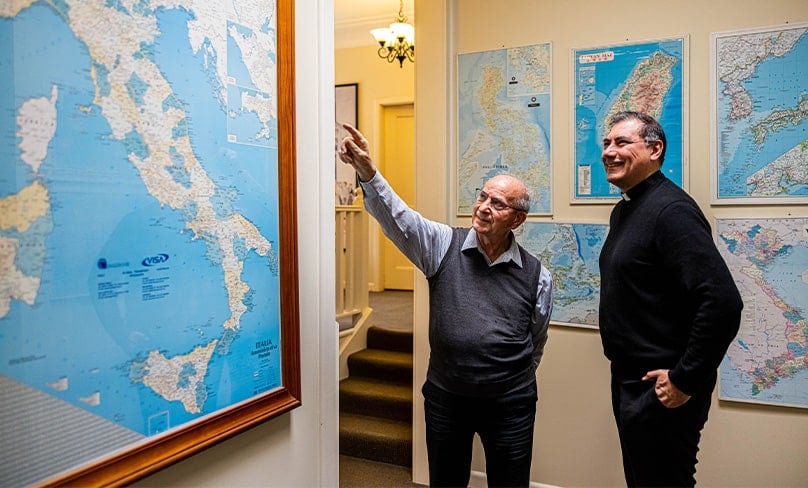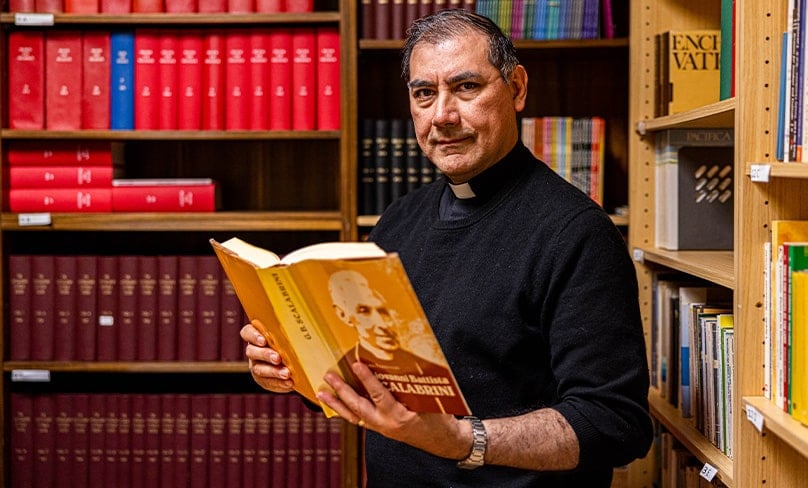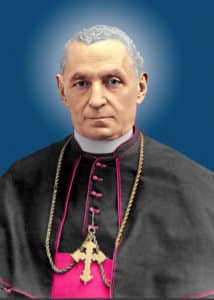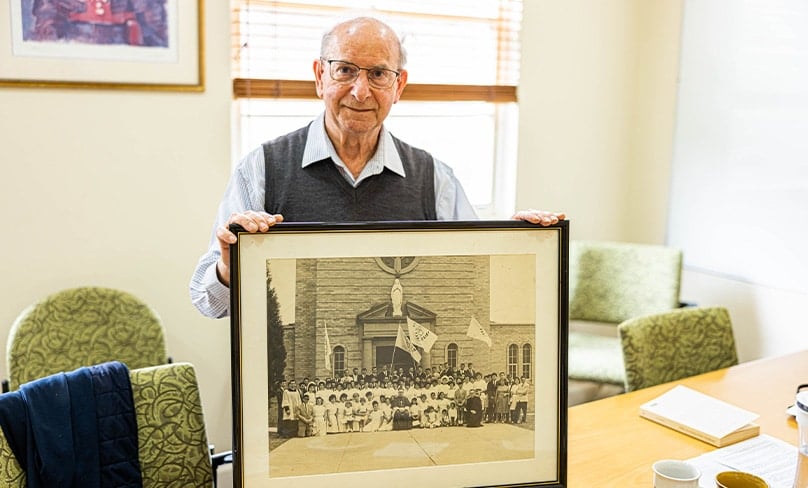
Founded by a soon-to-be canonised bishop, this largely-Italian missionary society is celebrating a major milestone serving those who crossed the world to build a new life in Australia
In 1952, Queen Elizabeth had just succeeded George VI on the throne; Pius XII was Pope, Sir Robert Menzies was Prime Minister and the Scalabrinians arrived in Australia.
Seventy years later, members of the order have made their way back to Italy this weekend to witness their founder John Baptist Scalabrini canonised by Pope Francis in St Peter’s Square.
In what has been called “The Scalabrini Year” in Australia, the milestones are being hailed as official recognition for the man who spoke for the voiceless and became the inspiration for the pontiff’s annual World Day of Migrants and Refugees.
Often described as “relatively unknown”, Scalabrini’s sainthood is of global significance to millions around the world, including the order’s 650 religious, many of whom will be there to witness his veneration as a saint.
“We have been calling it ‘The Scalabrini Year’ as we are celebrating 70 years in Australia, 25 years since our founder became Blessed and this week becoming a saint.”
He founded the Congregation of the Missionaries of St Charles Borromeo and the Congregation of the Missionary Sisters of St Charles Borromeo, ministering to migrants, refugees, seafarers and displaced persons.
Provincial of the St Frances Xavier Cabrini province which includes Australia, the Philippines, Taiwan, Indonesia, Japan and Vietnam, Fr Nacho Gutiérrez cs, said it was a huge honour to be leading the order at the time of the canonisation.
“We have been calling it ‘The Scalabrini Year’ as we are celebrating 70 years in Australia, 25 years since our founder became Blessed and this week becoming a saint,” he beamed.
“We may be small in numbers, but we are huge in heart and we are so very, very proud of this recognition of his vision and mission.

“I fell in love with the charism and I am so happy I am able to be at this incredible moment in history.”
Arriving on our shores in the early 1950s, the Scalabrinians’ presence reflected the emerging Italian community and migration in Australia.
The mostly newly-ordained men in their early 20s requested to be sent to Australia for their first mission following the establishment of flourishing communities in both the United States and Canada.
“Sailing by ship for more than 40 days, the young clergy travelled to … the two main locations where the Italian migrants gathered.”
Little did they realise that despite being an order of missionaries, most would spend the majority of their priestly lives in their new-found home, well and truly confirming it was all about the “charism and not the tourism” of the order.
Sailing by ship for more than 40 days, the young clergy travelled to the cane fields in Cairns and the steel works in Unanderra, the two main locations where the Italian migrants gathered.
Although it didn’t take long before their communities flourished and spread to urban areas, particularly Sydney, Melbourne, Adelaide, Newcastle and Wollongong.

They’re a Weird Mob was often how the mostly Irish Catholic congregations described the “new Australians” and, like the movie of the same name, detailed the culture shock of the Italian immigrant experience in Menzies-era Australia.
They faced widespread cultural rejection by parishioners unwilling to accept the rituals and practices of the Italian Masses including processions, music and songs.
Reflecting on his life, one of the longest-serving Scalabrinian priests in Australia and former provincial Fr Savino Bernardi, said quite simply that “Australia was a long way from home … in more ways than geographically”.
He said the food, employment and the language was incredibly challenging and while clergy were looked upon quite favourably, the average Italian migrant had it pretty tough.
“It was very hard for those early Italians arriving in Australia so far from home which is why it was so important we be here to support them,” he said.
“I guess none of us had any idea when we left Italy, we would be spending most of our priestly life in the one place.
“I remember Australia as a unique and vast community and fairly well developed but vastly different from anything I knew.”
“I was very lucky to be in the first group of priests who flew to Australia which took three days; prior to that they came by boat which took more than a month.
“I remember Australia as a unique and vast community and fairly well developed but vastly different from anything I knew.
“Maybe being so young meant that I was quite adaptable, I remember in the early days I would get invited out to parishioner’s homes and be served lamb chops and maybe two or three vegies which was quite foreign to me.
“There was no pasta, pizza, tuna or olive oils and the wine was quite limited, which was something we weren’t used to.

“I’ll always remember when I was living in the parish at Dee Why in the 1960’s, the housekeeper would turn up at 9am each day and cook us a steak which we would eat cold at midday, and I remember asking her why she didn’t cook it at midday and she said ‘that’s the way we’ve always done it’ which still makes me laugh.”
It wasn’t until the 1970’s with the change in policy by the-then Prime Minister Gough Whitlam that conditions started to ease for not only Italians, but all Europeans in Australia.
The Scalabrinians realised they would soon have an aging population and introduced nursing homes and hostels which today offer faith-based care, especially to migrant communities who want to maintain a close relationship to their heritage and traditions.
“Our founder was known as the Father to the Wanderer and today we continue our missionary work where it’s most needed.”
“Today our nursing homes are part of our continuing care for not only Italians but all members of the community,” Fr Nacho said.
“Although quite often they are what we are known for but we do so much else.
“Our founder was known as the Father to the Wanderer and today we continue our missionary work where it’s most needed.
“Today, internationally there are tens of millions of migrants and refugees which remains a key global concern for us.”
